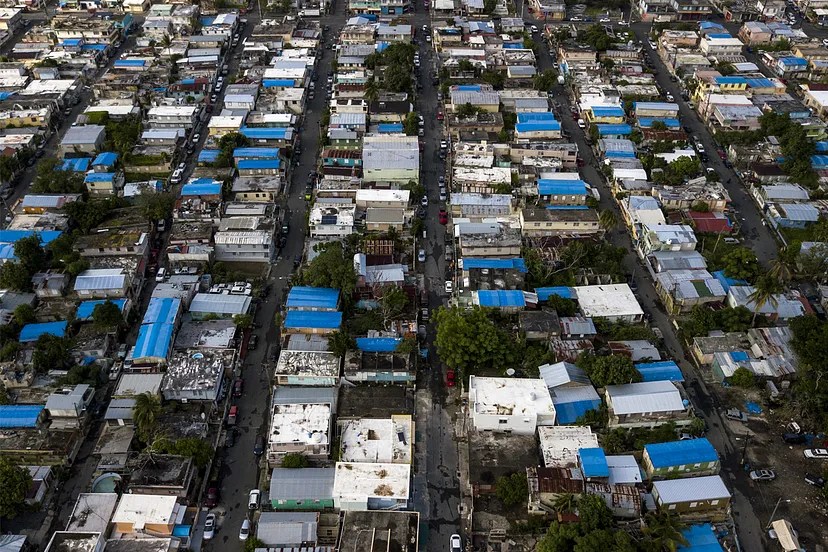
Editor’s note: In December, the New York Fed hosted a roundtable discussion as part of Investment Connection in Puerto Rico, a program that matches financial institutions and other capital providers with nonprofit and community development organizations working in Puerto Rico whose needs may qualify for credit under the Community Reinvestment Act. This guest column was contributed by one of the New York Fed’s community development partners in connection with that event. The views presented are the author’s alone and are offered to contribute to discussions on this topic.
The need for resilient affordable housing in Puerto Rico was clear even before Hurricanes Irma and Maria devastated the Island in 2017. Now, more than three years after those natural disasters, a recovery in Puerto Rico’s housing stock should be well on its way — but it’s barely started. Following earthquakes in 2019 and 2020, that need has only grown.
Disaster recovery dollars never flow fast enough to meet the needs of survivors, but delays in aid have been an impediment to Puerto Rico’s economic and housing recovery. The federal government promised Puerto Rico tens of billions of dollars in aid through Federal Emergency Management Agency and Housing and Urban Development (HUD) grants after Hurricane Maria. The money was to go to infrastructure repair, public services, small business assistance, and residential rebuilding.
Of the more than $20 billion in flexible HUD Community Development Block Grant-Disaster Recovery funds promised for low- and moderate-income beneficiaries in Puerto Rico, just $100 million has been spent — or one-half of one percent of the promised funds. If that money gets flowing, it would create an opportunity to reshape Puerto Rico’s housing supply, with an emphasis on resiliency and affordability.
Challenges abound. My organization, Enterprise Community Partners, has been working in Puerto Rico for a decade, and we’ve seen those challenges up close. Among them: The current plan for residential rebuilding will not allow federal funds to be used for substantial rehabilitation of properties located in floodplains or landslide zones. According to rough estimates, that’s about half the island. If this policy remains in place once federally funded rebuilding begins in earnest, we will see massive residential relocation, as well as greatly increased housing density.
Puerto Rico will be missing an important opportunity if it doesn’t use federal funds for an equitable and resilient recovery. Since the hurricane, my colleagues and I have been working with community groups, private industry, investors, University of Puerto Rico students, mayors, and the Island’s housing authority to consider how that might work.
In our conversations, organizations and individuals on the Island said they would need help to access grants and federal contracts, and to communicate their needs. While those we spoke with recognized the need to rebuild with resilient housing, very few had the technical understanding of how to do so, let alone do it affordably.
We’ve been working to change that. With our Puerto Rico Nonprofit Capacity Building Network, Enterprise is partnering with the New York Fed, NeighborWorks, and the Puerto Rico Community Foundation. Together we launched the Puerto Rico Nonprofit Leadership Development Initiative to create long-term capacity among nonprofits involved in Puerto Rico’s disaster recovery efforts. Key elements of the program include one-on-one mentoring, capacity-building workshops, peer learning, capacity-building grants, and direct technical assistance to six nonprofits from across the Island. We want to ensure that these mission-driven, local organizations can access recovery funds and plan for a more resilient future.
Enterprise is also partnering with One Stop Career Center of Puerto Rico to build the organization’s capacity to support vulnerable populations as Puerto Rico’s economy recovers from the 2017 hurricanes and Covid-19. Enterprise has provided more than $500,000 in capacity building grants to 10 community development corporations in Puerto Rico over the last five years, with plans to invest an additional $1 million in the next two years.
Enterprise has hosted workshops, webinars, a law school mini course, and continuing education legal training in English and Spanish on accessing HUD funding for recovery efforts. More than 1,400 people participated in our webinar on protecting homes and communities from earthquake risk; another 400 participated in our webinar on flood preparation and mold mitigation. Both were part of our Keep Safe series, which offers practical strategies for rebuilding in Puerto Rico and other island communities. As the numbers show, residents are hungry for workable resilience strategies. (Our “Keep Safe” guide to resilient rebuilding is available here in English and Spanish, along with our business continuity toolkit for affordable housing organizations.)
Finally, at Enterprise’s policy shop, we’re advocating for changes to how the nation’s disaster recovery programs work so that relief funds reach communities quickly. One recommendation to speed up recovery is to allow bridge loans to recipients of HUD grants to harness private sector capital, which would later be repaid with federal funds.
Through this work, we have learned that Puerto Ricans are committed to a robust recovery. Hurricanes Irma and Maria, the subsequent earthquakes, and the impact of Covid-19 on an already beleaguered and debt-strapped economy mean we must do a better job, at all levels and in all sectors, to support Puerto Rico. We all have a role to play in the recovery, and in reforming related structures and systems. Together we can ensure that Puerto Rico rebuilds and rebounds.
This article was originally published by the New York Fed on Medium.
The views expressed in this article are those of the contributing authors and do not necessarily reflect the position of the New York Fed or the Federal Reserve System.










